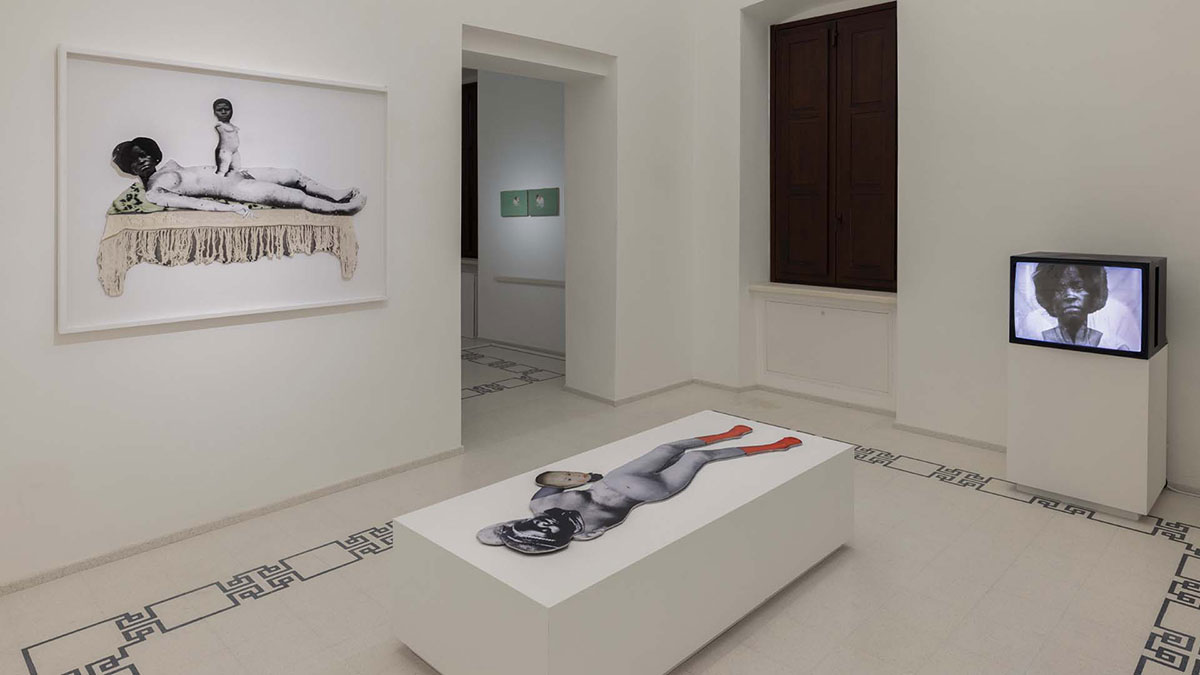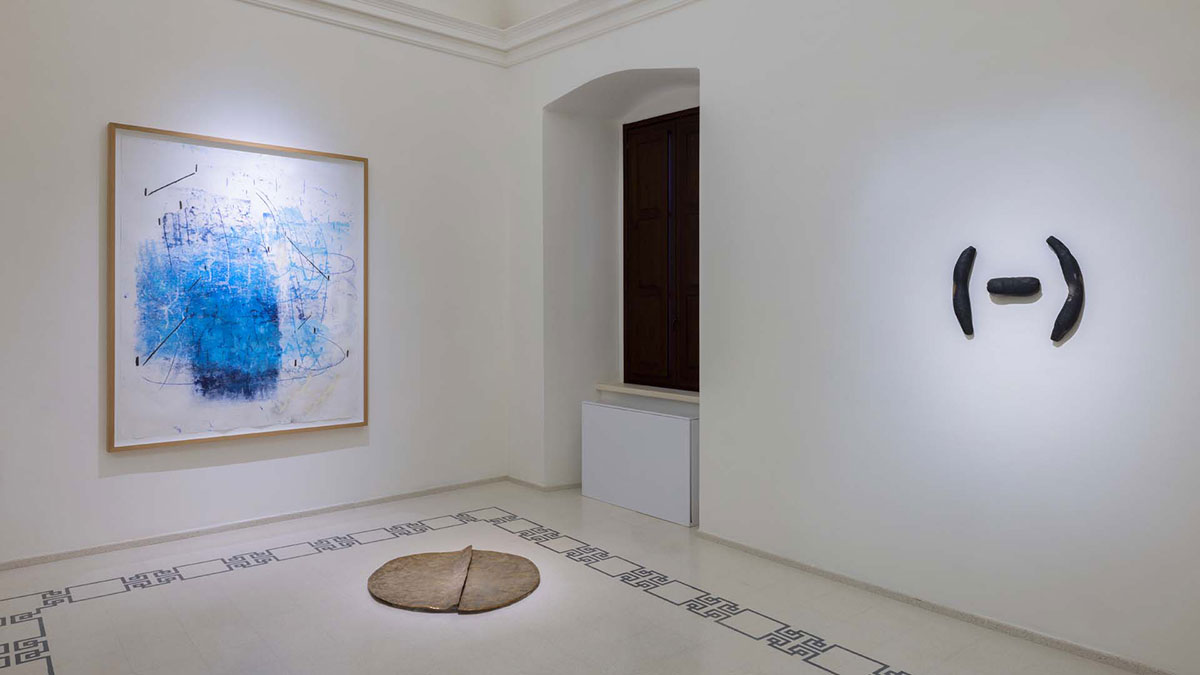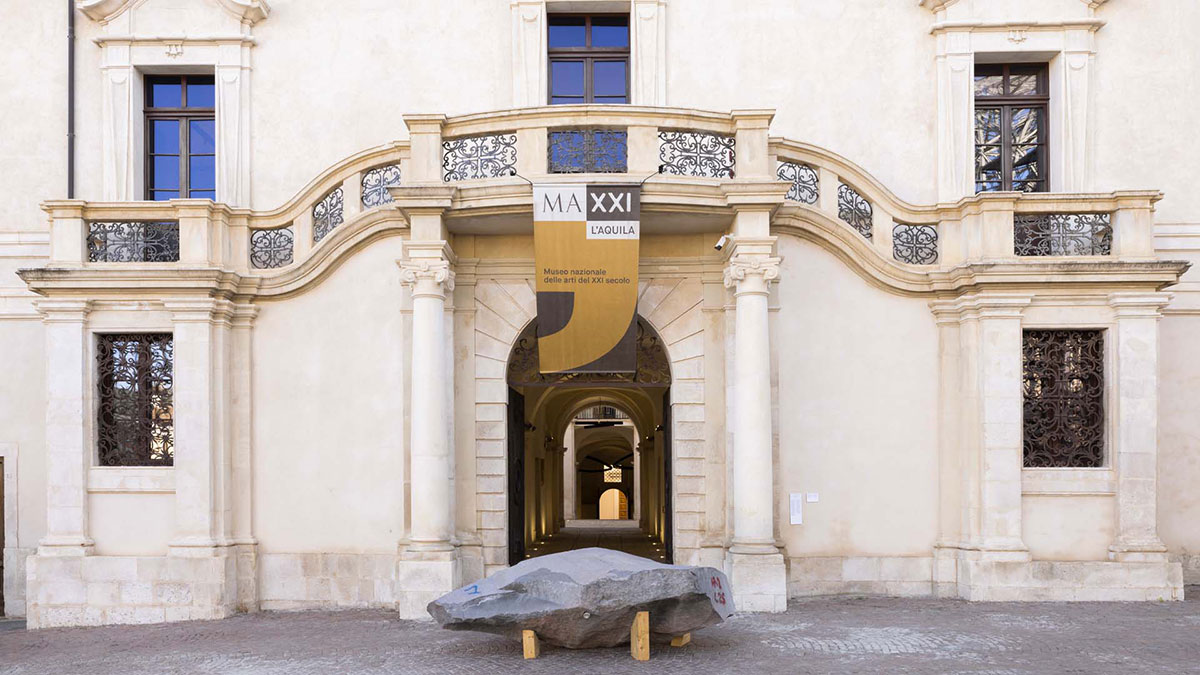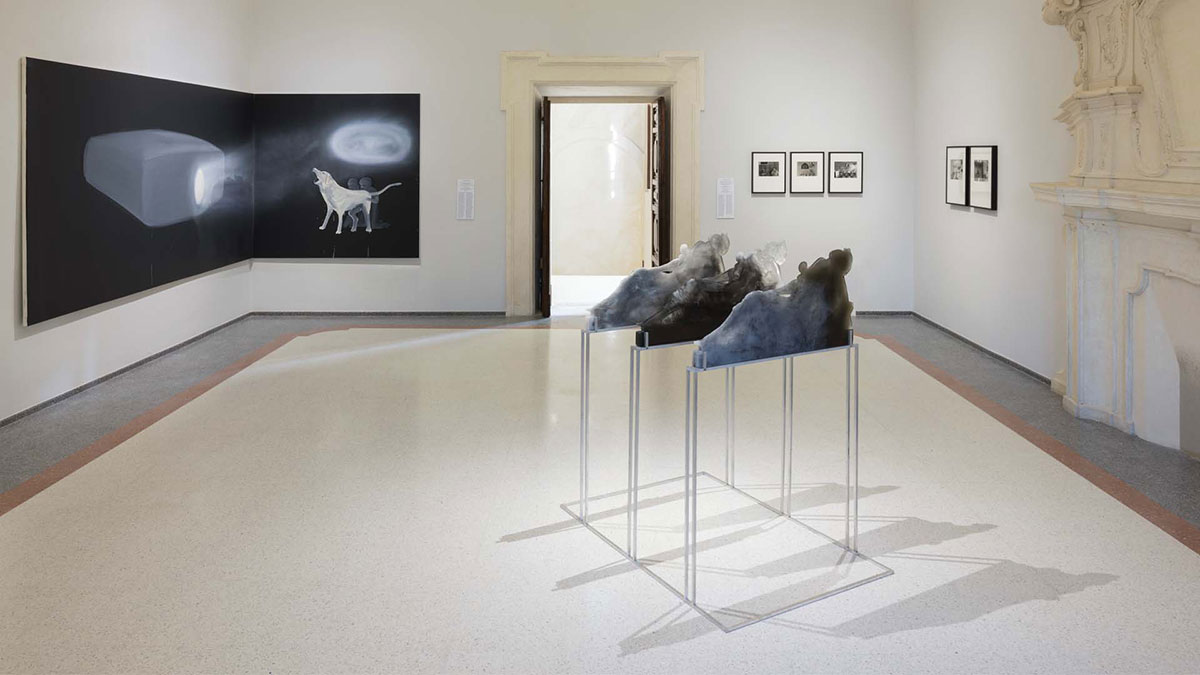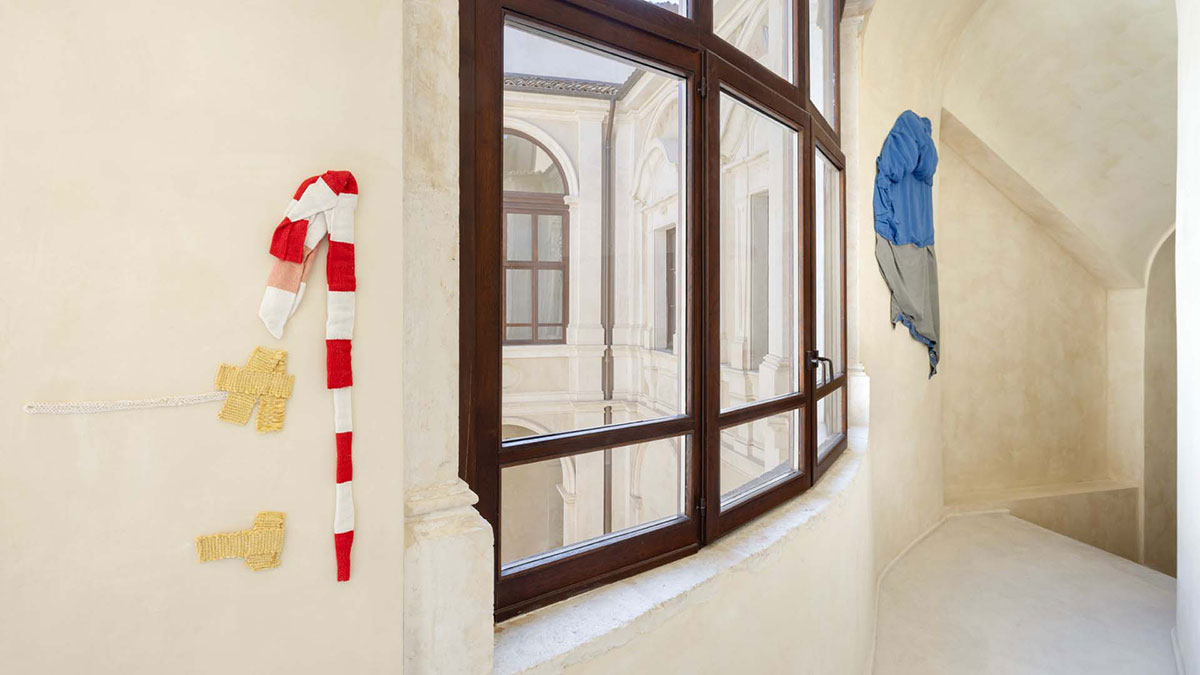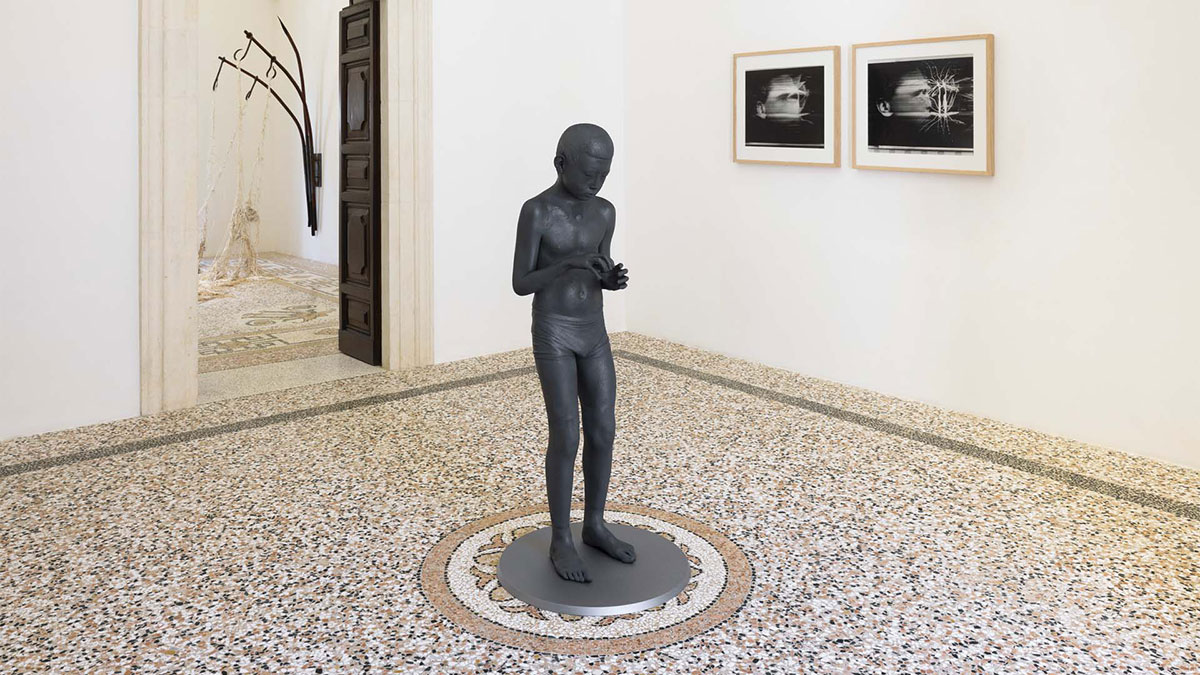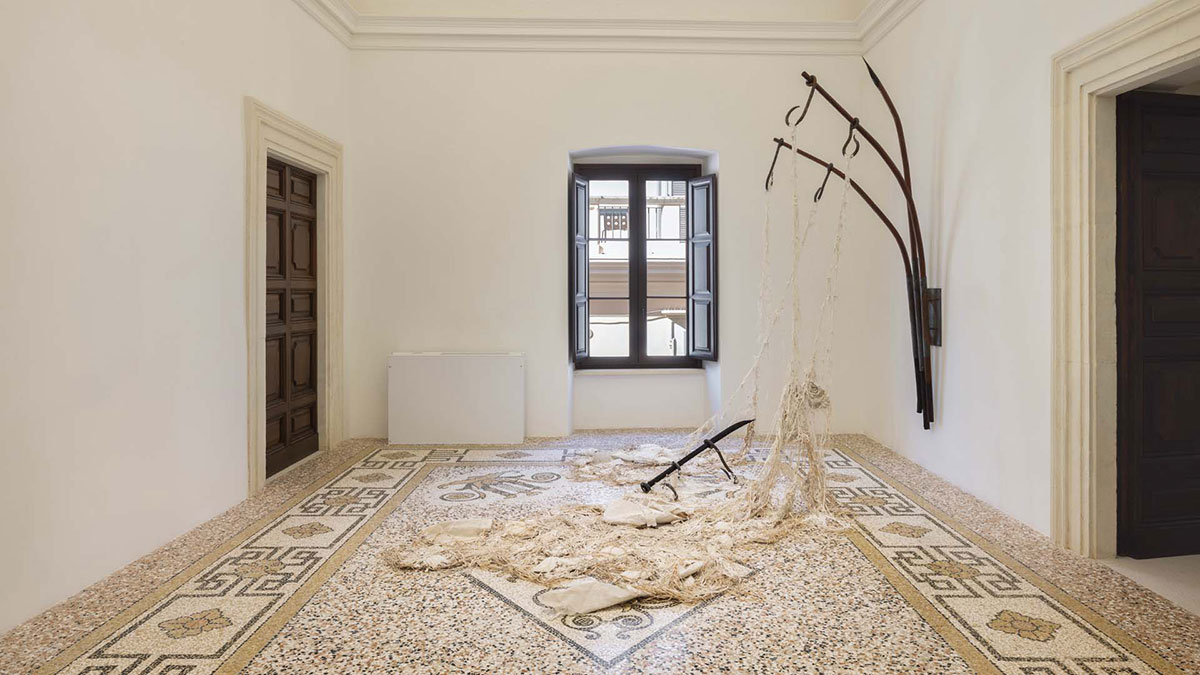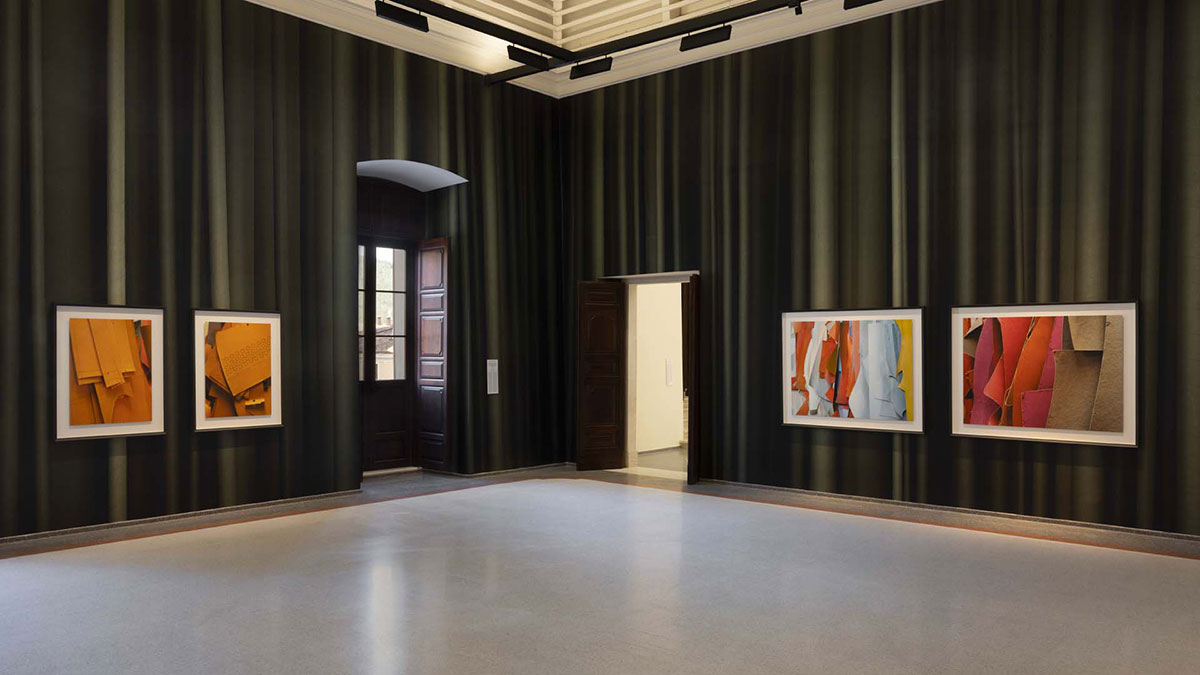PRESENTATION: Afterimage
 The group exhibition “Afterimage” is a meditation upon the forms in which what has disappeared persists in and around us, both materially and metaphorically. The title refers to an optical illusion called ‘afterimage,’ which happens when a visual stimulus like a camera flash generates an impression on the retina that remains even after the stimulus has vanished.
The group exhibition “Afterimage” is a meditation upon the forms in which what has disappeared persists in and around us, both materially and metaphorically. The title refers to an optical illusion called ‘afterimage,’ which happens when a visual stimulus like a camera flash generates an impression on the retina that remains even after the stimulus has vanished.
By Efi Michalarou
Photo: MAXXI L’AQUILA Archive
“Afterimage” is conceived as a visual poem that reflects on the coexistence of permanence and impermanence as a universal human condition rooted in our existences and bodies, as well as in objects, places, meanings and images. The visitors are invited to establish intuitive, spontaneous associations between the works, and the architecture of Palazzo Ardinghelli but also with the history of L’Aquila, a city that day after day is a testament to the correlation between memories from the past and the drive to transform. Stone, bronze and clay are materials that humankind has used for millennia to construct the spaces and stories we inhabit. We can see the passing of time on their surfaces, like silent witnesses that preserve the traces of events. The works of several artists in the exhibition explore how materials can absorb memory, be they lasting or more ephemeral sup-ports. The artworks by June Crespo, Anna Maria Maiolino and Esther Kläs establish a dialogue between the material and the body, between the temporality of a gesture and that of form, while Francesco Arena and Luca Monterastelli delve into the relationship between the lasting nature of stones and the fleeting nature of human time. Finally, in the works by Bronwyn Katz and Dominique White daily and recycled materials that are closer to us in time spark a poetic and political reflection on our present, which is a space in contiuous transformation where the traumas of the past are processed. Images exist as more than mere messages and meanings. Like us, they live in time and space and are embodied in supports and materials that change. Just like our bodies, images respond to an almost biological destiny. Scattered throughout the exhibition, we find works by Mario Cresci, Paolo Gioli and Luca Maria Patella, three pioneers of experimental photography and film who, starting from the 1960s, broadened the horizons of artistic representation by exploring the limits and possibilities of the film, lens-based devices, and printing techniques.
This historical and analogical perspective is echoed in the contemporary digital experimentations we see with the changing physiognomies by Massimo Grimaldi and the perceptive ambiguity between the photographic image and its support in the work by Elisa Sighicelli. The sculpture by Oliver Laric suggests the relationship between the past and present, between the material and the immaterial, and has been placed in dialog with the bodies and screens of the paintings by Tala Madani and Mario Schifano, also suspended between the material and the evanescent. One theme running through the entire exhibition is the human body, with its multiple identities and ways of being portrayed. These bodies react to events and change with them, both on a material and metaphor-ical level. In the works by Francis Alÿs and Frida Orupabo, the body is continuously broken down and reassembled, its fragments giving rise to novel visual narratives. The potentialities of figurative sculpture are explored by Paloma Varga Weisz and by He Xiangyu, with all the potential meaning that the image of an adolescent may evoke, from a state of solitude to one of germination. The bodies of Marisa Merz are also in constant metamorphosis, establishing a dialogue between the language of sculpture and that of painting, between inner experiences and art history. Finally, traditional iconographies (from Byzantine to Cubist paintings) act upon the bodies and figures in the works by Pietro Roccasalva in a play of continuous incarnation. Almost like geological bodies and buildings, even images can become stratified over time, accumulating meaning and memories on their surfaces. “Afterimage” is made up of works where the images themselves create space or interact with the architecture of Palazzo Ardinghelli, like the textiles by Hana Miletić, where photography, tactility and urban space merge; or the room conceived by Thomas Demand, where digital simulation and photography create together an architecture within an architecture, a space suspended between what is real and what can be imagined. The environmental installation by Benni Bosetto transforms an ancient tradition of local handcraft into a phantasmagoria of forms, while the work by Dahn Vo connects with the architecture of the building and calls for a timely revision of the relationship between nature and culture. Finally, images of inhabited spaces are embodied in different materials, revealing their tactile qualities as in the diptych by Stefano Arienti that transposes photographs taken on Gran Sasso in the Apennine mountains onto silk woven in Penne.
Works by: Francis Alÿs, Francesco Arena, Stefano Arienti, Benni Bosetto, Mario Cresci, June Crespo, Thomas Demand, Paolo Gioli, Massimo Grimaldi, Bronwyn Katz, Esther Kläs, Oliver Laric, Tala Madani, Anna Maria Maiolino, Marisa Merz, Luca Maria Patella, Hana Miletić, Luca Monterastelli, Frida Orupabo, Pietro Roccasalva, Mario Schifano, Elisa Sighicelli, Paloma Varga Weisz, Danh Vo, Dominique White, He Xiangyu
Photo: Exhibition view: Afterimage, MAXXI L’AQUILA, 2022, Courtesy MAXXI L’AQUILA
Info: Curators: Bartolomeo Pietromarchi and Alessandro Rabottini, MAXXI L’AQUILA (Museo nazionale delle arti del XXI secolo), Piazza Santa Maria Paganica, 15, L’Aquila, Italy, Duration: 5/7/2022-19/2/2023, Days & Hours: Wed & Fri-Sun 12:oo-20:00, Thu 16:00-23:00, https://maxxilaquila.art/

